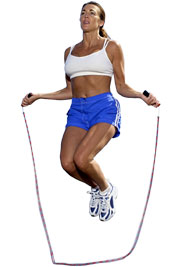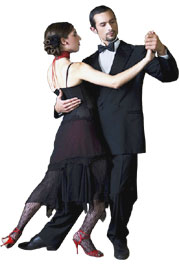What Does The Body Use For Energy
- Introduction to free energy expenditure
- What causes the torso to burn calories?
- Essential functions
- Physical activity and practice
- Growth, pregnancy and lactation
- Free energy expenditure in infants
- Gender
- Thermal effect of food
- Menstruation
- Age
- Genetics
- How is physical activity measured?
- Metabolic equivalents (METs)
- Physical activity level (PAL)
- Sedentary (1.0 ≤ PAL < 1.4)
- Low activity (ane.4 ≤ PAL < 1.six)
- Agile (one.half dozen ≤ PAL < one.9)
- Highly active (ane.9 ≤ PAL < two.5)
- Physical activity levels in infants
Introduction to energy expenditure
 The man body converts the food consumed past the individual into energy. The amount of energy provided by food is typically measured either in calories or kilojoules.
The man body converts the food consumed past the individual into energy. The amount of energy provided by food is typically measured either in calories or kilojoules.
Dissimilar types of food contain different amounts of energy. Fats and alcohol comprise relatively high amounts of free energy (i.e. 9 calories per gram in fat and seven calories per gram in alcohol) compared to carbohydrates (3.75 calories per gram) and proteins (iv calories per gram). Thus the amount of energy consumed depends not only on the amount of food consumed, merely too on the types of food consumed.
Energy produced from food in the man trunk is used to maintain the torso's essential functions (e.g. cell growth and repair, respiration, blood transport) and perform concrete tasks including work, practice and recreational activities. The trunk needs a set up amount of free energy just to perform its essential functions, and in most individuals, the bulk of free energy consumed volition be expended performing these functions.
The vast bulk of individuals also perform at least some form of physical activity throughout the 24-hour interval. Physical activity includes all forms of move, including walking, lifting objects, cleaning, exercising and dancing. As the total amount of physical activity an individual performs increases, that individual's energy requirement also increases.
The energy expended in performing physical tasks accounts for most of the private'due south remaining energy expenditure (after energy expended for essential functions). A range of factors including the types of concrete activities performed, too as the length of time for which they are performed, influence the corporeality of free energy consumed.
What causes the trunk to burn calories?
There are many factors which touch on the amount of energy an individual expends. Performing essential bodily functions and performing physical activities are the two major expenders of energy, although energy expenditure is likewise influenced by other factors such as age, gender and even menstruation.
Essential functions
 A person who is resting in bed and does not do any form of physical activeness, (e.g. walking), will still crave nigh 1200 calories in a 24 hour period to maintain their essential functions. This energy expenditure is known equally Basal Energy Expenditure (BEE) and is typically the largest single component of energy expenditure.
A person who is resting in bed and does not do any form of physical activeness, (e.g. walking), will still crave nigh 1200 calories in a 24 hour period to maintain their essential functions. This energy expenditure is known equally Basal Energy Expenditure (BEE) and is typically the largest single component of energy expenditure.
The Basal Metabolic Charge per unit (BMR) is the rate at which energy is expended for BEE while an private is awake, merely in a completely resting state (east.g. lying down and having not eaten, every bit eating increases energy expenditure because the body must expend energy to digest consumed nutrient).
Concrete activity and do
Apart from basal energy expenditure, an individual expends nigh of their free energy performing a range physical activities, and Total Energy Expenditure (TEE) (i.e. basal energy expenditure plus all other energy expenditure) therefore depends largely on the corporeality of physical activity an individual performs. In individuals who perform a lot of physical action (eastward.k. athletes, labourers), the component of energy consumed during physical action is often more than the component expended performing essential bodily functions. Even in individuals who do not perform obviously physical tasks, concrete activities which are performed unconsciously and spontaneously (e.g. fidgeting, smiling), consume energy.
Concrete activeness is the simply gene influencing free energy expenditure which can be controlled by an individual (as opposed, for case to gender and age). An individual who wished to increment their energy expenditure, therefore must increase either the quantity or vigour of physical activities they perform.
Concrete activity is whatever activity which causes the body to motion. Exercise is a distinct category of physical activity, characterised by activity which is sufficiently vigorous to induce laboured breathing and sweating. The corporeality of free energy expended during a period of physical activeness depends mainly upon the blazon of exercise and the vigour with which it is performed. More vigorous physical activities expend more than energy, for example an private who jogged for 30 minutes would expend more an individual who walked for 30 minutes, as jogging is a more vigorous course of exercise.
The body weight of the individual performing the do too influences energy expenditure and, on boilerplate, heavier individuals will consume slightly more than energy than lighter individuals performing the same tasks. For instance, an individual who weighs 57kg would expend 135 calories by walking briskly for 30 minutes. The same physical activeness would event in energy expenditure equivalent to 165 calories, in an individual who weighed 70kg.
After physical activity
The effects of physical activity on energy expenditure are felt fifty-fifty later on physical activeness has ceased, every bit the body's oxygen requirement increases in the post activity period. The extent of the increase in energy expenditure mail-exercise is related to the vigour of the do performed. An individual can await to expend an additional 15% of the energy expended performing a physical activity, in the mail service activity menses. As more vigorous activities expend more energy while they are being performed, they also cause an individual to expend more free energy in the postal service exercise menstruum. Depending on the vigour of the activity performed, an individual may expend additional energy for a menses of up to 24 hours after performing the physical activity.
Growth, pregnancy and lactation
Periods of growth, that is, periods in which new tissues are being grown past the body, require additional energy compared to periods of not-growth and thus an private who is growing requires additional energy to maintain this growth. Such tissue growth occurs during childhood, adolescence, gestation or lactation.
The growth of placental and foetal tissues likewise requires additional energy, and thus pregnant women take increased energy requirements. This is peculiarly true in the 2nd and third trimesters of pregnancy, when foetal growth occurs most apace. Lactation also creates a higher energy requirement, due to the boosted energy required to produce breast milk.
Energy expenditure in infants
 The most intense menstruum of growth occurs during the first year of life. The amount of energy expended by babies and very immature children differ significantly from the amount expended by older children and adults. This is mainly because, in the first year of life, a considerable proportion of the energy consumed by a baby is used to assist growth. This growth-profitable free energy is converted to tissues which increase the size of bones, muscles and body organs like the liver, kidney and encephalon and the procedure of converting energy to torso tissues is known every bit tissue degradation. Babies typically double their body weight within six months, and triple it within 12 months, before their charge per unit of growth stabilises. Thus the proportion of energy which is used for growth and tissue deposition is highest in early infancy. Up to 1 calendar month of age, an infant uses some 35% of its energy for growing. This decreases to around 3% by 12 months of age. From at that place, growth remains relatively stable until the pubertal growth spurt, where up to 4% of energy is used to assist growth. In the first year of and extensive growth, energy expenditure per kilogram of torso weight in infants is approximately double that of adults and basal energy expenditure accounts for almost all the infants total energy expenditure.
The most intense menstruum of growth occurs during the first year of life. The amount of energy expended by babies and very immature children differ significantly from the amount expended by older children and adults. This is mainly because, in the first year of life, a considerable proportion of the energy consumed by a baby is used to assist growth. This growth-profitable free energy is converted to tissues which increase the size of bones, muscles and body organs like the liver, kidney and encephalon and the procedure of converting energy to torso tissues is known every bit tissue degradation. Babies typically double their body weight within six months, and triple it within 12 months, before their charge per unit of growth stabilises. Thus the proportion of energy which is used for growth and tissue deposition is highest in early infancy. Up to 1 calendar month of age, an infant uses some 35% of its energy for growing. This decreases to around 3% by 12 months of age. From at that place, growth remains relatively stable until the pubertal growth spurt, where up to 4% of energy is used to assist growth. In the first year of and extensive growth, energy expenditure per kilogram of torso weight in infants is approximately double that of adults and basal energy expenditure accounts for almost all the infants total energy expenditure.
Energy expenditure also varies betwixt babies depending on the age and sex of the child and whether they are being fed with breast milk or formulas and supplementary foods. Infants typically crave more free energy as they historic period, and male infants usually expend more energy than female infants. Infants consuming only breast milk typically expend less energy than those beingness fed with infant formulas and other foods, in the first 12 months of life. At age iii months, a formula-fed infant requires 7% more energy than a breastfed infant, while at half-dozen, ix and twelve months of historic period the boosted requirement for formula-fed infants is eight%, 9% and 3% respectively.
Gender
Free energy expenditure in women is estimated to be 16% lower than free energy expenditure in men. The exact reason for the difference is unclear, however information technology is thought to be related to the different hormonal surround of male and female bodies.
Thermal effect of nutrient
Eating increases the torso's free energy expenditure slightly, as the body must work harder, and thus apply more free energy, to assimilate and process nutrient. This is known as the thermal effect of nutrient. The extent to which food consumption increases energy expenditure above resting levels (i.e. higher up BEE) depends on the type of nutrient which is consumed. The thermal effect of carbohydrates raises the trunk's energy expenditure by 5-ten% for the catamenia taken to digest the food. Consumption of fat raises energy expenditure past <5%, while protein consumption raises energy expenditure past up to 30%, reflecting the more energy intensive process required to process protein in the body.
Menstruation
A women's BEE appears to increment during the luteal phase (the post-ovulation stage of the menstrual cycle), compared to the follicular stage (the first half of the menstrual cycle or the phase immediately following the start of menstrual bleeding) of the menstrual cycle.
Age
As an adult ages, their BEE decreases. In men, the reduction in energy requirement commences at around 40 years of age, while women typically experience reduced energy expenditure following menopause, showtime at around 50 years of age.
Genetics
Free energy requirements differ considerably between individuals and this is thought to be genetically related. While there is currently bereft evidence to predict an individual's energy requirements based on genetic characteristics, this may be possible in the near future.
How is physical action measured?
Metabolic equivalents (METs)
Metabolic equivalents (METs) is a mensurate of the vigour of a physical activity and is based on the rate of oxygen consumption while that activity is being undertaken. The amount of oxygen consumed is related to the number of calories expended.
By calculating the METs of a physical activity, it is possible to also calculate the number of calories which will be expended for each minute that the action is performed. Equally an private'south trunk weight also influences they corporeality of oxygen consumed during physical action, trunk weight is also considered when calculating how many calories an individual consumed during activity.
The following table provides the METs values for a range of mutual household and leisure activities and the energy expenditure (in calories) equivalent to 30 minutes of that activity for men and women weighing 70kg and 57kg respectively.
| METS | Free energy expenditure (calories) | Energy expenditure (calories) | |
| Mild | |||
| Playing squeeze box | one.eight | 66 | 54 |
| Flute | 2.0 | 74 | 60 |
| Horseback riding (walking) | 2.three | 85 | 69 |
| Cello | ii.3 | 85 | 69 |
| Piano | 2.3 | 85 | 69 |
| Billiards | 2.4 | 88 | 72 |
| Boating (leisurely) | 2.five | 92 | 75 |
| Golf game (with cart) | 2.5 | 92 | 75 |
| Violin | ii.5 | 92 | 75 |
| Walking (2 mph) | ii.v | 92 | 75 |
| Dancing (ballroom) | 2.ix | 107 | 87 |
| Volleyball (noncompetitive) | 2.9 | 107 | 87 |
| Moderate | |||
| Walking (3 mph) | 3.3 | 121 | 99 |
| Cycling (leisurely) | 3.five | 129 | 105 |
| Calisthenics (no weight) | iv.0 | 147 | 120 |
| Golf game (without cart) | four.4 | 162 | 132 |
| Swimming (slow) | iv.5 | 165 | 135 |
| Walking (iv mph) | 4.five | 165 | 135 |
| Vigorous | |||
| Chopping forest | four.9 | 180 | 147 |
| Tennis (doubles) | 5.0 | 184 | 150 |
| Dancing ballroom (fast) or square | 5.5 | 202 | 165 |
| Ice skating | 5.5 | 202 | 165 |
| Cycling (moderately) | v.7 | 209 | 171 |
| Dancing (aerobic or ballet) | 6.0 | 221 | 180 |
| Surfing | 6.0 | 221 | 180 |
| Skating Roller | half dozen.5 | 239 | 195 |
| Skiing (h2o or downhill) | 6.8 | 250 | 203 |
| Climbing hills (no load) | 6.9 | 254 | 206 |
| Swimming | 7.0 | 257 | 209 |
| Climbing hills (5 kg load) | 7.four | 272 | 221 |
| Walking (v mph) | 8.0 | 294 | 239 |
| Jogging (10 min miles) | x.two | 375 | 305 |
| Rope skipping | 12.0 | 441 | 359 |
| Squash | 12.one | 445 | 362 |
Physical activity level (PAL)
 Physical activity is measured using a rating of Concrete Action Level (PAL), which quantifies the proportion of total energy expenditure acquired past physical action. Individuals with a low PAL expend only a small-scale proportion of their total free energy performing physical activities; the majority of their energy is expended to maintain essential bodily functions. Individuals with a high PAL on the other hand expend more half of the total energy performing physical activities. The following PALs correspond to the categories of physical activeness.
Physical activity is measured using a rating of Concrete Action Level (PAL), which quantifies the proportion of total energy expenditure acquired past physical action. Individuals with a low PAL expend only a small-scale proportion of their total free energy performing physical activities; the majority of their energy is expended to maintain essential bodily functions. Individuals with a high PAL on the other hand expend more half of the total energy performing physical activities. The following PALs correspond to the categories of physical activeness.
Sedentary (i.0 ≤ PAL < 1.four )
Sedentary individuals consume energy through basal energy expenditure, the thermal consequence of food, and conducting the tasks necessary for independent living (e.g. sitting, standing, cooking, cleaning). They exercise non perform any other concrete action, such every bit recreational walking.
Low activity (ane.4 ≤ PAL < one.6 )
Individuals who are categorised as depression activity consume free energy through the same mechanisms as sedentary individuals. In addition, an boilerplate weight individual (i.e. a man weighing 70kg or a woman weighing 57kg) will undertake concrete activity which is equivalent to walking ii.2 miles each day at a rate of 3-four miles per hour, or roughly 45 minutes of brisk walking. Brisk walking tin can exist considered walking which increases the heart charge per unit to such an extent that the private becomes slightly out of breath, but tin still talk as they perform the activity. Individuals who are much lighter need to undertake greater amounts of activity, while those who are much heavier practise not need to undertake equally much physical action. For instance, an individual who weighed only 44kg, would need to walked for ii.9 miles at the aforementioned speed, while one who weighed 120kg would need walk for only 1.5km.
Active (1.6 ≤ PAL < 1.9 )
As with sedentary individuals, agile individuals expend energy through eating and performing the tasks of everyday living. In add-on, men and women weighing 70kg and 57kg respectively, undertake physical activity which is equivalent to walking vii.iii miles per mean solar day, at a rate of iii-4 miles per hour, or roughly two hours of brisk walking. The physical activeness requirement for agile individuals weighing only 44kg increases to nine.9 miles per day, while for those weighing 120kg, the requirement increases to five.three miles per 24-hour interval.
Highly Agile (ane.9 ≤ PAL < ii.v )
Highly active individuals expend energy through the thermal issue of nutrient and conducting the tasks of day to 24-hour interval living. In add-on individuals weighing 70kg undertake physical activity which is equivalent to 16.seven miles per day of walking at a speed of iii-four miles per hour, or roughly six hours of brisk walking. Individuals who weigh only 44kg need to walk 22.5 miles per day to exert the same effect, while those weighing 120kg demand walk just 12.3 miles per day to achieve a PAL equivalent to being highly active.
Physical activity levels in infants
As an infant ages, energy consumed through physical activity accounts for an increasingly greater proportion of TEE. At three months of age, an baby'southward PAL is one.ii, that is, only around 17% of its full free energy expenditure occurs from physical action, while some 83% of energy is expended maintaining essential functions (as BEE). The baby's PAL typically rises to 1.four by 24 months of age. So by ii years, 29% of a child'south energy expenditure occurs through physical activity.
Exclusively breastfed infants obtain an estimated 500 calories per day from breast milk, a value which is somewhat lower than the energy expenditure requirements of infants aged 2 months and older. However, exclusive feeding with chest milk is recommended as the most nutritious dietary selection for infants nether six months of age, and, because of the lower energy requirements of breastfed infants compared to formula fed infants, babies will receive all the macro and micro nutrients they need in the first six months of life from exclusive breast feeding.
More information
 | For more than information on fitness and practice, including stretches, types of exercise, exercise recovery and exercise with health weather, likewise equally some useful videos, meet Fettle and Exercise. |
References
- Console on Macronutrients & Standing Committee for the Scientific Evaluation of Dietary Reference Intakes. Energy. Chapter v. Dietary Reference Intakes for Energy, Carbohydrate, Cobweb, Fat, Fatty Acids, Cholesterol, Poly peptide and Amino Acids (Macronutrients), National Academy of Sciences. 2005. [cited 2009, June half dozen], Available from http://world wide web.nap.edu/itemize/10490.html
- Panel on Macronutrients & Standing Committee for the Scientific Evaluation of Dietary Reference Intakes. Concrete Action. Chapter 12. Dietary Reference Intakes for Energy, Carbohydrate, Fiber, Fat, Fatty Acids, Cholesterol, Protein and Amino Acids (Macronutrients), National University of Sciences. 2005. [cited 2009, June 6], Available from http://world wide web.nap.edu/catalog/10490.html
All content and media on the HealthEngine Weblog is created and published online for informational purposes only. It is not intended to exist a substitute for professional medical advice and should not be relied on as health or personal advice. E'er seek the guidance of your doc or other qualified health professional with any questions you may have regarding your wellness or a medical condition. Never disregard the advice of a medical professional person, or filibuster in seeking it considering of something you take read on this Website. If you think you lot may take a medical emergency, call your doctor, go to the nearest hospital emergency department, or call the emergency services immediately.
What Does The Body Use For Energy,
Source: https://healthinfo.healthengine.com.au/energy-expenditure-how-the-body-burns-calories
Posted by: williamsyestan73.blogspot.com


0 Response to "What Does The Body Use For Energy"
Post a Comment